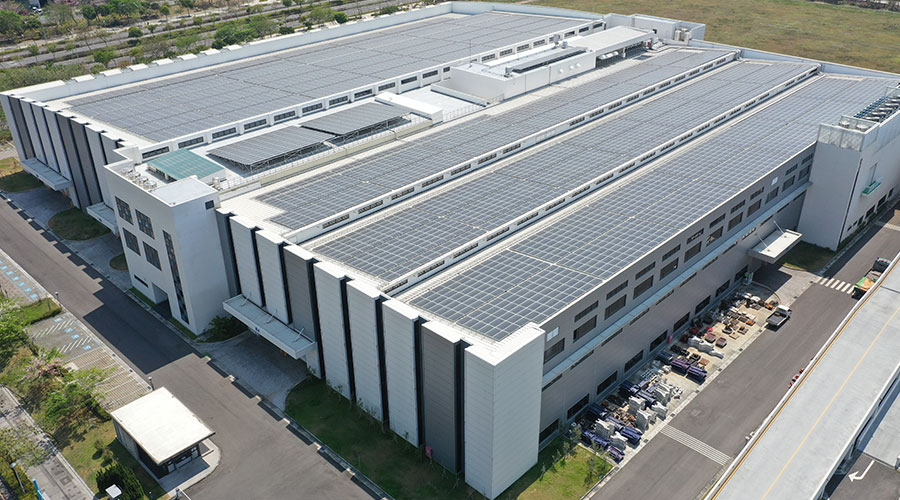3 Strategies for Green Product Selection in Healthcare Facilities
Red lists, EPDs/HPDs, and green certifications are all essential tools for helping facility managers create criteria and standards for green products.
By Greg Zimmerman, Executive Editor
OTHER PARTS OF THIS ARTICLEPt. 1: This Page
At a green building conference a few years ago, Dr. Claudia Miller, assistant dean of the University of Texas School of Medicine, made a rather bold statement: “Architects have a greater ability to improve public health than medical professionals,” she said.
The same could certainly be said for facility managers. That’s because facility managers are the ones who choose products on an ongoing basis for the life-cycle of the facility. Decisions facility managers make regarding products brought into a facility have a profound effect on the health and wellness of patients and staff, as well as on the overall quality of the environment, both indoor and for the world at large.
But it’s not always easy to wade through the din to ensure product criteria and standards developed, and the products selected as a result, are truly doing no harm.
“The strategic role of healthcare is not just treating diseases, but also preventing them,” says Howard Williams, president and senior sustainability consultant at Howard Williams Consultants. “Healthcare’s role is delivering health care. Think through what this means vis a vis product standards and prioritize tools that enable facilities and purchasing to align and support the vision.”
Beyond cost and performance, facility managers must consider a range of environmental factors in the products. Here are three strategies to consider for getting the best results.
1. Consider a Red List — Call it a list of restricted substances or a list of chemicals of concerns, a red list is essentially a list of chemicals that are not allowed to enter a healthcare facility in any form, including building and cleaning products. For large organizations, like Kaiser Permanente, the red list usually falls under an environmental purchasing policy. For smaller organizations, EPA, the Living Buildings Institute, and others all have developed red lists readily available for facility managers to use as part of their own product selection criteria.
But why is a red list important? For one, says William Paddock, cofounder and managing director of WAP Sustainability, “It’s pretty important for healthcare facility managers to make sure they’re not filling the hospital with substances that are causing the very diseases that people are coming to have cured.” Known carcinogens and toxic chemicals are the main substances that make up the red lists, but these lists are constantly evolving. “Always be aware that the chemicals lists are changing,” says Paddock. “What chemical will be the next 60 Minutes special?”
But simply selecting products that won’t do harm is only half the battle. Facility managers should also make a concerted effort to effect positive health and wellness benefits with product selection. “Healthcare facilities should be the safest places we should be able to go indoors,” says Paddock. Building and cleaning product standards must reflect a healthcare facility manager’s commitment to maintaining the health of the facility’s patients and staff. Products that help achieve good indoor air quality, lower energy use, and ensure a healthy community should all be given highest priority in healthcare facilities.
2. EPDs/HPDs – Once a red list has been identified, how do you determine whether the products you’re considering include any of those substances? In most cases, you can’t just email your sales rep and say, “Hey, what chemicals are in your chair?” Instead, ask for a document called a Health Product Declaration. The HPD is a standardized way to report the materials that make up a building product so facility managers can see if any are considered hazardous, or appear on their own list of restricted chemicals. In recent years, more and more manufacturers have spent the time and money to have HPDs developed for their products because some of the leading rating systems, like LEED, WELL, and the Living Buildings Challenge, are rewarding users for selecting products that have HPDs developed for them.
That’s also true for the HPD’s close cousin, the Environmental Product Declaration (EPD). The EPD lists the environmental attributes and impacts of a product, based on the manufacturer conducting a full environmental life-cycle assessment of the product. There is a ton of information in the EPD, not all of which facility managers will be interested in or will be useful. So Williams suggests making sure you understand what you want to get out of an EPD before requesting one.
One of the most common reasons to request EPDs for products is to discover the amount of embodied carbon in the product. Facility managers who are participating in their organization’s greenhouse gas catalogue will need to understand how much carbon is required to manufacture the products they select. This is especially important in huge healthcare facilities with larger-than-average carbon footprints. “There are lots of tools to help us manage (energy) consumption,” says Paddock. “But we don’t have a great idea of how much carbon it took for concrete, flooring, or other products. So embodied carbon is an important criterion, and then you can select products based on carbon intensity.”
That’s not to say EPDs aren’t important for considering other environmental criteria, like soil erosion, waste generation, and more. It’s just that, as facility managers well know, often too much data is just as bad as not enough. So again, it’s important to know exactly what you’re looking for and how you’ll use that information in product selection criteria.
“I favor the idea of telling suppliers why you want the information, how it will be used, and that EPDs will be required on and after a certain date,” says Williams.
3. Green Product Certifications – For many healthcare facility managers just beginning to create product standards, the tried-and-true cadre of green product certifications are still incredibly useful tools to differentiate products that meet particular criteria for environmental standards. “Green product certifications are an ‘easy button,’” says Williams. “The third-party certification assures purchasers of an unbiased review against the standards, effectively outsourcing verification and the need to stay current.”
That’s to say, the most common single-attribute green certifications quickly show a stamp of approval for a particular green criterion, like VOC emissions or recycled content.
A green certification can also provide a more complete picture of product selection standards and criteria, though, says Williams. “A multi-attribute, third-party certification, such as Cradle-to-Cradle, satisfies red lists, carbon management, water stewardship, responsible recycled content, and social equity for an increasing array of products and materials.”
In some cases, often with single-attribute certifications, the green product certification will be included in an EPD, says Paddock. But if facility managers are unsure, or if the manufacturer hasn’t created an EPD for a particular product, the green certification can then still be a valuable differentiator.
Email comments and questions to greg.zimmerman@tradepress.com.
Related Topics:












